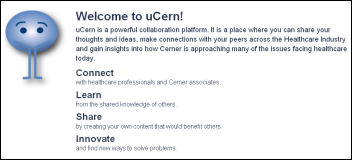Ageed Mike, "patients are the widgets that must be processed" additionally when it costs close to $3,700 a month for…
News 10/7/09
From Alborg: “Re: Herb Conaway’s bill. Good news! I researched the status of the 5/2009 Assemblyman Herb Conaway’s bill (first reported at HIStalk) to make non-CCHIT certified EHR systems illegal in the state of NJ, and it seems that they shelved it without action. Two things helped kill the bill: the fact that the HHS finally threw the Sherman Antitrust Act-busting CCHIT "under the bus" on 7/16/2009, leaving CCHIT’s future murky in 2010 and beyond as EMR vendors will flock to the new ONC certification, and the bad press that started all over the ‘net with nothing but the bad facts about this bill and its main sponsor, Assemblyman Conaway, who had HIMSS associations and had received corporate lobbying money.” I’m a political illiterate, but I wonder if he just introduced the bill to return a favor incurred somewhere along the way but never really thought it could or should pass. I can’t imagine that a politician (even a doctor like him) suddenly decided this was his hill to die on unless someone was prodding him.
From S. Silverstein: “Re: HIT vendors selling ‘de-identified’ clinical data to pharmas (with the latter’s increasingly public record of ghostwriting of scientific articles favorable to their products, salesmanship of drugs for non-approved uses in violations of FDA guidelines, suppression of adverse clinical trials results, etc.). The vendors are perhaps opening up unnecessary cans of worms that will bite them when civil libertarians start taking notice. See: Ohm, Paul, Broken Promises of Privacy: Responding to the Surprising Failure of Anonymization (August 13, 2009). University of Colorado Law Legal Studies Research Paper No. 09-12. Available at SSRN. Perhaps vendors should stick to their core business of HIT production, which — as regulation of HIT increases — will require even more focus.” I think a lot of the work being done hides conveniently behind the concept of “anonymization” as an absolute; a simple technique of magically rendering highly sensitive personal data untraceable. Sounds good to a lay person, right? It even sounds technically reasonable as long as you’re thinking of someone having only one data element (just your birth date) instead of multiples (your birth date and ZIP code) and one database (a prescription file) instead of multiples containing joinable fields (prescriptions plus driver’s license records plus a grocery store loyalty card database). It’s like security in general: rarely absolute, secure only if there’s not enough incentive for someone to go to the trouble to crack the code.
An associate professor of pathology at University of Missouri criticizes his employer’s decision to outsource to Cerner, pointing out that the political appointees that make up the university’s Board of Curators have led the university to a 102nd place ranking among 110 national colleges (in their defense, it’s right up there with a lot of other big, football-obsessed easy admission state schools like Oklahoma, Nebraska, and Tennessee). Some snips, obviously fueled by a few rounds of tenure: “It appears he [University president Gary Forsee] is prone to make the same top-down decisions that were unsuccessful when he directed a large communications network … The medical school’s administrative residency program is on probation and is undergoing critical review; a major factor is that the Cerner system is so cumbersome that resident training is compromised … Three years ago, the radiology department dropped a Cerner software program because it was seriously flawed.”
Sarah Kramer, the former eHealth Ontario CIO who was fired for handing out no-bid contracts, is accused in a CBC article of doing something similar at her previous job as CIO of Cancer Care Ontario. Accenture was told it didn’t make the final vendor cut for a $5 million surgery wait time application, but an Accenture senior partner friendly with the CIO was allowed to make an oral presentation criticizing the two short-listed vendors, resulting in Accenture’s being awarded the contract three days later. And in the least shocking news of all, the $5 million system turned out to be a $20 million system. That’s one side of the story, anyway. I’m guessing there are two.
Former Google Health bigwig Adam Bosworth launches Keas, a Web site that provides individualized care plans. It sounds like a rather pedestrian idea, but he’s got a big executive team, an army of stock art models, and grand plans to let providers create plans (not medical advice, the terms of service make clear) to which patients can subscribe as easily as buying an iPhone app. My money would be on the usual revenue sources, i.e. drug company advertising and trying to get deep-pockets insurance companies to buy bulk subscriptions for their patients. Apparently all the good domain names were taken, leaving the company to link its futures to an obscure New Zealand parrot (the kea) shown in its logo.
Speaking of Google Health, it proudly announces that two more insurance companies have signed on, rocketing the total to three (with just a few hundred to go) after 20 months, which is decades in Internet time.
Weird News Andy approves this message: “Impending lawsuits? Nah!” An anonymous caller to the compliance hotline of Broward General Medical Center (FL) reports that a nurse is using the same IV fluid bag and set on multiple cardiac stress test patients. True, the hospital found. They’re warning 1,800 patients to get hepatitis and HIV tests. The nurse quit and left the country.
Ingenix announces that its CareTracker EMR has new Surescripts-certified e-prescribing capabilities.
Kathleen Sebelius tells Cerner and its customers that President Obama thanks them for being “a health partner in this ongoing battle.” This refers to Cerner’s H1N1 network, to which 200 hospitals are contributing data. It sounds like they’re flagging ED admissions with elevated temperatures, which doesn’t seem all that specific (I seem to remember that some county or state health departments already track that). I’m also not sure what the government would do faced with an obvious local flareup (drop ship Purell? redirect Tamiflu supplies?) but at least they’ll know (except in communities served by large academic medical centers that are more likely to be running Epic than Cerner).
Speaking of Cerner, the local paper covers its prospects, citing a William Blair estimate that HITECH will goose Cerner sales by as much as $8 billion. They have a great picture of the three founders beaming. Another article describes Neal Patterson’s emotional recounting of the healthcare experience of his wife Jeanne, who has breast cancer.
Cerner announces its uCern social networking site, the uDevelop development platform, and the uCern Store for buying applications. I don’t know anything more about those offerings since only Cerner customers can access them. It sounds interesting, anyway, although the all the hospitals I’ve worked at would not have contributed apps because (a) it’s not our core business; (b) we don’t want some rube hospital calling us up demanding support for something we wrote for our own use; (c) we don’t want to help our competitors who might buy our stuff; and (d) we have irrational fears of being sued if something goes wrong. My experience is that hospitals are mildly willing to help out a vendor’s customer peer provided they feel technically or medically superior and hopefully geographically distant to them, but nobody’s going out of their way to make it happen.
Tressa Springmann, VP/CIO of Greater Baltimore Medical Center (MD), is named to the advisory board of Maryland’s HIE, CRISP (Chesapeake Regional Information Systems for our Patients). I made fun of the tortured acronym a few weeks back and got a nice note (and a music recommendation) from Johns Hopkins CIO and CRISP board member Stephanie Reel, who explained that they just tried to pick a name that reflected their intentions. Always quick to jump at the chance to provide unrequested and likely unwanted advice, I suggested Chesapeake RHIO, to be acronymized into CHERHIO (the jaunty English greeting, not the oaty breakfast cereal).
Open source BI vendor Pentaho acquires the assets of SaaS BI vendor LucidEra. The companies have raised nearly $50 million of capital between them.
I had planned to attend Mayo Clinic’s symposium on healthcare last month since they were kind enough to invite me (as did Dr. Natalie Hodge, the “iPhone Doctor” and co-founder of Personal Medicine International), but day job logistics got in the way. They have session videos up, though, so I will need to check those out. I’m watching Natalie right now, in fact.
QuadraMed launches its ICD-10 Countdown Program, which includes the Quantim ICD-10 Coding Simulator, educational tools, and services to help providers convert to ICD-10.
The press seems shocked that Bellevue Hospital (NY) got a tip that Joint Commission was on its way and sent a staff e-mail urging the discharge of “patients that do not need hospitalization” and having supervisors check to make sure patient documentation was complete. Surely they don’t think that hospitals just conduct business as usual without regard to an impending survey, even now that they are unannounced? Or that Joint Commission isn’t aware of its multiple roles of accreditor and vendor? You used to be able to pay them (and maybe still can) to do a mock survey to make sure you were ready for the real thing, kind of like cramming for the SAT to get a score you couldn’t have obtained without help.
Was this really how stimulus money was supposed to work? General Hospital in Nashville says it will get more than enough stimulus money to cover the remaining $3 million cost of its EMR project, but wants to borrow city money to finish it since that chicken has to come before the financial egg.
HERtalk by Inga
Routine use of electronic health records can improve the quality of preventive care and help manage chronic disease in primary care practices, according to a primary care study.
athenahealth signs an $30 million agreement to purchase AnodyneHealth Partners, a SaaS business intelligence provider. Anodyne will continue to market its BI solution as a standalone product. In addition, athenahealth plans to integrate the service into the athenaCollector platform. The deal includes a cash payment of $22.3 million with the potential for additional consideration of $7.7 million, based on the achievement of certain business and financial milestones. Neither Mr. H nor I had heard of Anodyne before, but understand they traditionally serve large and enterprise-size medical groups. Jonathan Bush says the Anadyne purchase should help them get their foot in the door at some of the larger institutions.
Blue Shield of California makes $29.6 million available for pay-for-performance bonuses. Medical groups and IPAs can qualify by demonstrating the performance of quality care using such measures as diabetes care, patient experience, managing ER visits, and deployment of IT.
The Wyoming Department of Health grants a $4 million, three-year contract to ACS to provide an EHR and HIE for the state of Wyoming.
Baptist Healthcare System (KY) becomes the first health system to simultaneously implement both the access and business management modules of McKesson’s Horizon Enterprise Revenue Management solution. Baptist Hospital Northeast went live August 15th.
In a $54 million stock deal, Nuance Communications acquires eCopy, a provider of document scanning solutions. Nuance plans to combine eCopy’s touch screen technology with its existing multifunction printer desktop solutions.
3M Health Information Systems, McKesson, and Executive Health Resources sign a strategic agreement to offer RAC Advanced Services. The joint solution will combine 3M’s coding and billing solutions, McKesson’s InerQual medical necessity criteria, and EHR’s physician advisors to conduct second-level reviews.
The use of smartphones by physicians is expected to increase from 64% today to 81% by 2012. A more “mature” and proficient physician audience will emerge and the Internet will become physicians’ primary professional resource. Look for physicians to use their smartphones for everything from administrative tasks to patient monitoring.
The Bronx RHIO selects Axolotl’s Elysium Exchange to power its HIE. Participating providers will be able to electronically exchange via existing EHRs, or, with Axolotl’s Elysium EMR Lite product.
Summa Health System (OH) selects Wolters Kluwer Health to provide its ProVation MD software for cardiology procedure coding. Summa plans to use the software at its three cardiac cath labs at Summa Akron City Hospital.
People keep asking when we are going to get on Facebook. Yesterday, I decided to forego all my much more important tasks to set up a site for myself (Inga Histalk) and an HIStalk Fan Club. Now, in addition to reading HIStalk, HIStalk Practice, and Twitter, you have one more way to stay in the know/surf the Web and pretend you are working.
I’m Denver-bound this weekend, headed to the national MGMA conference. We’ll be posting a Must-See Vendors guide later this week, plus I’ll be sending in daily updates. If you are attending, feel free to pass on any tips for sessions to attend or booths with must-have trinkets. Be sure to visit our great sponsors, who will be handing out a limited supply of HIStalk magnets (I’d bet everyone would think you were really cool if you brought one back to put on the lunchroom fridge). Special thanks to the multi-talented Dr. Gregg Alexander who created the magnets and who regularly writes on HIStalk Practice and still finds time to practice full-time.











Surprised you didn’t cover this earth shaking announcement:
“CHIME, in partnership with Castle Worldwide, a leader in certification solutions, has developed the first Certified Healthcare CIO Program. Created for health care CIOs, by health care CIOs, this credential will allow leaders in the industry to quickly and easily identify themselves.”
LOL!
If they can’t identify themselves why don’t they just wear name tags?
[From Mr. HIStalk] I covered it at length when it was announced in July. I share your cynicism.
“Kathleen Sebelius tells Cerner and its customers that President Obama thanks them for being “a health partner in this ongoing battle.” ”
Of course she would heap praise. Her buddy pal chum former Cerner trustee deParle is the reform czar.
Did Sebelius express concerns about the safety, efficiency, and reliability of the medical equipm,ent Cerner is using to gather the data?
Anodyne is popular among GE/IDX sites for their dashboard/scorecard technology – appears to be based on Adobe Flex technology….users seem to like the fancy front-end. Developers appreciate their experience with the GE/IDX system, but the data model and metric definitions are mostly fixed and lack integration to organizational targets/benchmarks.
A.H. might get audience with former Groupcast sites but Flowcast/Centricity Business would seem to be a reach?
Re: “The medical school’s administrative residency program is on probation and is undergoing critical review; a major factor is that the Cerner system is so cumbersome that resident training is compromised”
Resident training is inherently risky as-is due to inexperience and exhaustion(e.g., remember the Libby Zion case?)
If HIT compromises resident training, it also likely compromises patient care. Enterprising malpractice lawyers might want to buy some of the clinical data Cerner’s seliling to pharma to see if there’s gold in the data regarding compromised patient care…
My full thoughts on sale of patient data by HIT vendors to third parties is now at http://tinyurl.com/hit-trafficking
Can anyone provide examples of contract language from any HIT vendor that allows the sale of HIT-based data to occur?
Dr. Adelstein writes: “A simple Internet search turns up a plethora of complaints and reports of lawsuits regarding the effectiveness of Cerner’s software and, more important, its failure to provide requested support. The pattern of receiving untested software has been a recurring problem at this institution. Three years ago, the radiology department dropped a Cerner software program because it was seriously flawed. I always admired the courage of the radiology chairman for cutting his losses. Most institutions become so financially committed to Cerner they cannot get out without admitting they made a serious administrative blunder.”
I reported in a comment several days ago that there was more to the Missou deal.
Missou must have an IRB to supervise experiments using untested patient and workflow management software on patients.
Cerner has a cluster of these “committed” hospitals offering up their patients for Neal’s experiments.